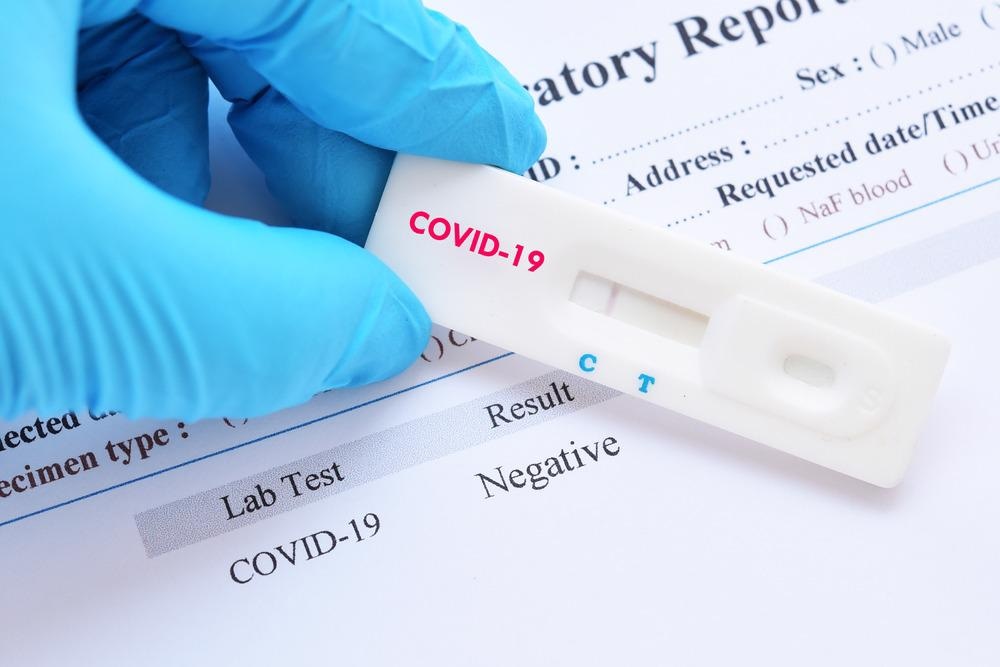A novel SARS-CoV-2 (COVID-19) detection assay through the use of plasmonic-magnetic nanorobots has been published in the journal, Applied Materials Today, with the aim of advancing breakthroughs for this viral global health crisis.

Study: Plasmonic-magnetic nanorobots for SARS-CoV-2 RNA detection through electronic readout. Image Credit: Jarun Ontakrai/Shutterstock.com
The Use of Tiny Robotic Systems
The advancement of nanotechnology has resulted in the development of micro/nanorobots, which are small-scale artificial machines designed to carry out predefined tasks triggered by chemical stimulants, through the conversion of energy into mechanical energy.
Autonomous, self-propelling machines that are high in specificity and sensitivity and can be guided through rational design, hold great potential in revolutionizing the field of diagnostics and therapeutics.
The use of these tiny robotic systems for advanced diagnosis in the severe acute respiratory COVID-19 pandemic, which has resulted in 175 million cases and 3.7 million deaths in over 220 countries worldwide, could help provide a simple and precise viral detection approach to this very transmissible infection.
The spread of the virus has devastated global populations and resulted in worldwide sanctions with governments introducing public health announcements such as national lockdown, social distancing, regular sanitization and continuous diagnostic testing.
Diagnostic Tests for SARS-CoV-2
Diagnostic tests have played a significant role in the pandemic, with regular testing being required through the use of lateral flow kits.
This is then followed up with a comprehensive laboratory polymerase chain reactive (PCR) test if a positive lateral flow test is found, or if an individual is experiencing symptoms, such as a persistent cough or fever.
The use of these tests has allowed infected individuals to be identified so they are able to self-isolate to ensure their infection is not transmitted to others.
During this time, the individual would be required to stay within their home, with a leave of absence from work until the isolation period is over. This process aims to prevent transmission of SARS-CoV-2 to co-workers and others with whom they may come into contact.
This is especially significant for those who are more vulnerable, such as the elderly and immunocompromised, with these groups being more susceptible to the virus as well as possibly having a longer and more severe period of recovery from the infection.
This could possibly lead to opportunistic infections such as pneumonia, with severe COVID-19 infections resulting in death.
The dependence on RT-PCR, which is the gold standard for detecting the SARS-CoV-2 virus, can be inconvenient and inefficient with the demand of results being too large to meet; this process involves laborious steps that are time-consuming.
The dependence on this test for a pandemic, where continuous diagnostic testing is being mandated, may not be an effective approach.
Novel Nanotechnology Diagnostic Test
Nanotechnology research into novel testing methods has led to the design of a simple and effective detection assay for the SARS-CoV-2 virus through the use of plasmonic-magnetic nanorobots that utilizes an electronic readout platform.
The researchers utilized a combination of iron oxide, gold and silver nanoparticles produced via a chemical reduction method.
The particles were then incubated with DNA probes which ultimately resulted in probe DNA-attached nanorobots that were then used to target RNA.
The assembly of magnetic actuation of nanorobots was performed through a transversal rotating magnetic field that was generated by a homemade triaxial coil set-up.
The use of plasmonic-magnetic nanorobots for SARS-CoV-2 RNA detection was shown to have movement through the use of a transversal rotating magnetic field that demonstrated the precision of maneuverable speed and directionality.
The researchers were able to show manually steered and programmed random directional propulsion of the nanorobots.
Future Outlook
This novel method illustrated detection sensitivity that could be compared to solid phase extraction (SPE) nucleic acid assays.
Additionally, the researchers of this study have stated the sensitivity of this assay can be further improved through using electrode modification or nucleic acid amplification.
This approach to detecting SARS-CoV-2 RNA may allow for innovative detection of this virus, which is simple and faster than the gold standard that is used currently for the detection of the virus – a benefit during the pandemic where continuous diagnostic tests are being mandated for almost all individuals.
The benefit of this technique can also be seen through its versatility and can be advanced further through developing targeting towards various nucleic acids and therefore be utilized as a promising detection tool for other types of infectious diseases.
This would further the field of diagnostics and can even be extended to other industries such as detecting environmental toxins and forensic analyses.
Continue reading: Single-Dose SARS-CoV-2 Vaccine Possible with Nanotechnology
Reference
Kim, J., Mayorga-Martinez, C., Vyskočil, J., Ruzek, D. and Pumera, M., (2022) Plasmonic-magnetic nanorobots for SARS-CoV-2 RNA detection through electronic readout. Applied Materials Today, 27, p.101402. Available at: https://www.sciencedirect.com/science/article/pii/S2352940722000415?via%3Dihub
Further Reading
Zagorski, K., Pandey, K., Rajaiah, R., Olwenyi, O., Bade, A., Acharya, A., Johnston, M., Filliaux, S., Lyubchenko, Y. and Byrareddy, S., 2022. Peptide Nanoarray Scaffold Vaccine for SARS-COV-2 and Its Variants of Concerns. Available at: https://doi.org/10.21203/rs.3.rs-1206402/v1
Yüce, M., Filiztekin, E. and Özkaya, K., 2021. COVID-19 diagnosis —A review of current methods. Biosensors and Bioelectronics, 172, p.112752. Available at: https://doi.org/10.1016/j.bios.2020.112752
Disclaimer: The views expressed here are those of the author expressed in their private capacity and do not necessarily represent the views of AZoM.com Limited T/A AZoNetwork the owner and operator of this website. This disclaimer forms part of the Terms and conditions of use of this website.